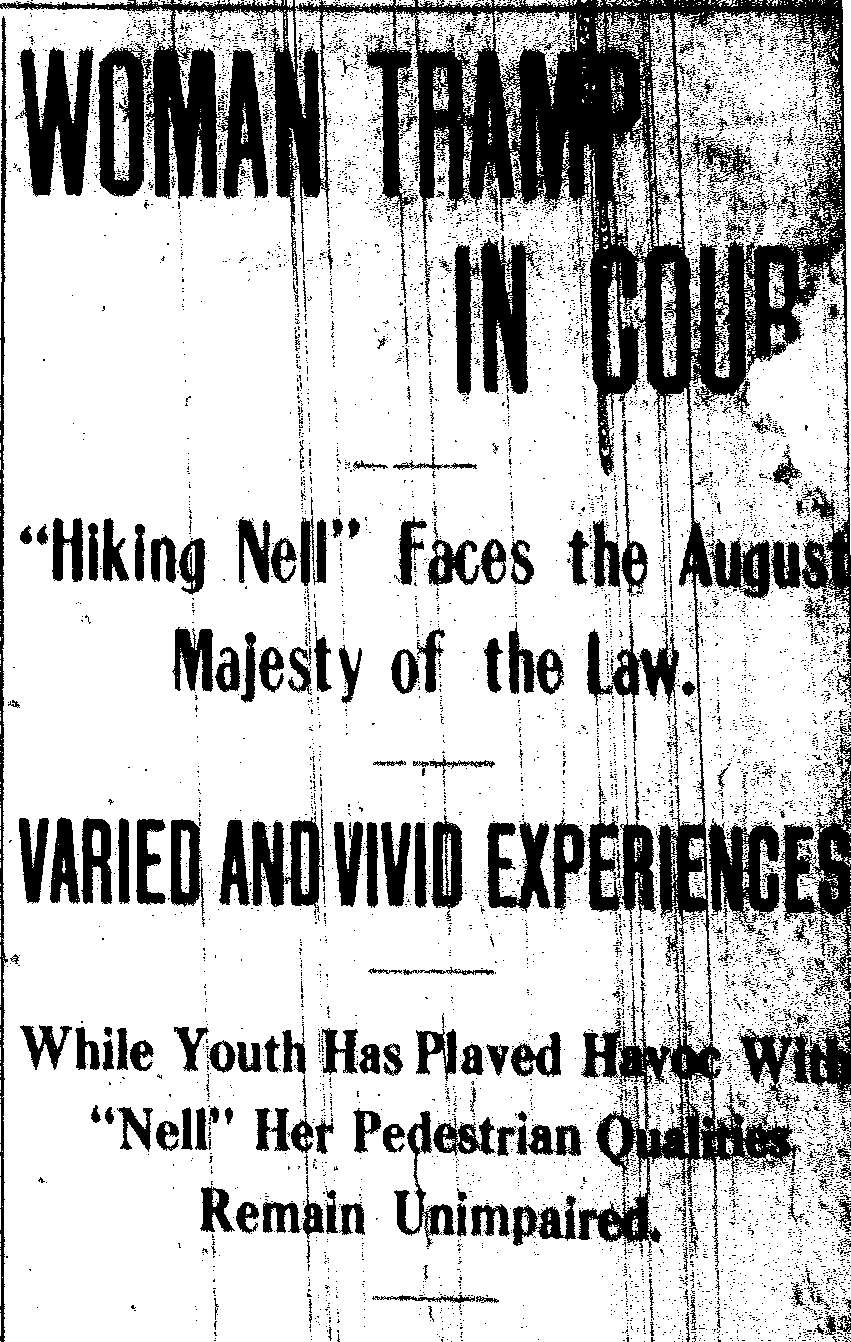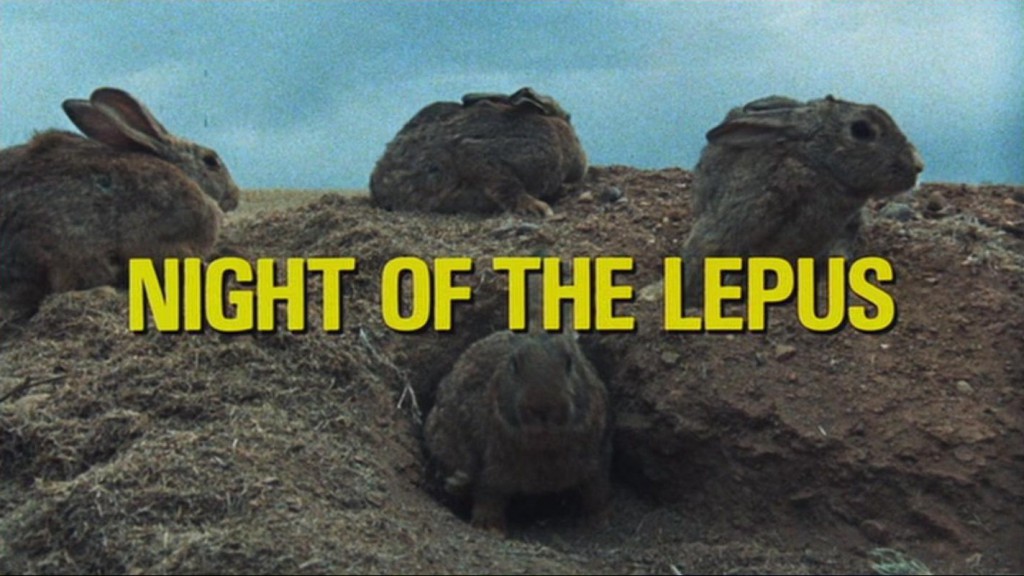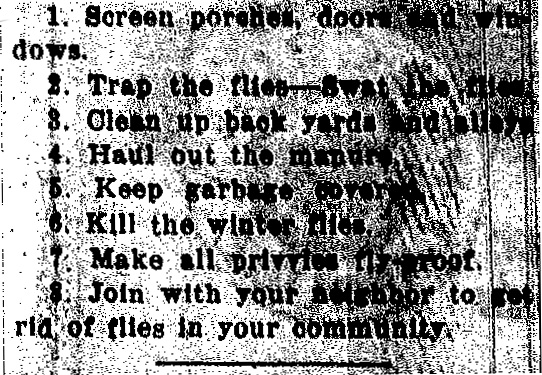 From the desk of Steve Willis, Central Library Services Program Manager of the Washington State Library:
From the desk of Steve Willis, Central Library Services Program Manager of the Washington State Library:
From 1909 to 1921, give or take a few years, there was a woman who created a local news stir wherever she went, but somehow evaded the radar of national media. She criss-crossed the United States on foot and went under the name “Hiking” or “Hikin'” Nell. Nearly all the information sources I can find on Nell come from newspapers around the U.S. The following article is the earliest mention of Nell I have located, from The Pasco Express, March 4, 1909:
WOMAN TRAMP IN COURT
“Hiking Nell” Faces the August Majesty of the Law
VARIED AND VIVID EXPERIENCES
While Youth Has Played Havoc With “Nell” Her Pedestrian Qualities Remain Unimpaired.
“After walking 1300 [i.e. 3100] miles on a wager of $5,000 and then to be arrested and forced to spend 60 days in the King county jail just a few miles from her coveted goal. This and even more is the grievance of Nellie Hale, alias ‘Hikin” Nell, who was arrested by officers Dent and Torrents Tuesday afternoon.”
“According to a statement made by Officer Dent in justice court ‘Nell’ was found in a small tie house constructed of old ties. In company with three tramps, she was busily engaged in preparing a mulligan stew. Without protest she accompanied the two officers to the city jail, and the following day was given a hearing before Justice McCarthy.”
“‘I don’t want no comment cast my way,’ said Nell, ‘for I am nothing but a tramp. I was just walkin’ my way on a bet from Pascolia, Florida, to the coast. What have you’s got against me? I never harmed nobody nohow.'”
“The woman says she is 35 years of age and has traveled extensively, but always walks. When she appeared in court she carried a large bundle of clothing consisting of shoes, skirts and waists. She answered the chief’s questions rapidly and seemed to take the whole matter as a joke until W.J. Davis appeared upon the scene with his camera and attempted to take a picture of the woman. As Mr. Davis was acting under instructions, Nell immediately protested and it was not until a collection was taken and promise given that the ‘whole bunch would be shot’ that she reluctantly consented to have her picture taken. The newspaper fraternity, together with the distinguished court and officers of the law lined up as per agreement and the heroine of many ‘hikes’ was for the first time, the victim of the camera.”
“‘Yes, judge, if you will let me go, I will hike mighty quick,’ said Nell. ‘It does seem a funny thing that I should start from Pascolia and wind up in Pasco. Ain’t that terrible luck?'”

It would be wonderful if someone could produce the photograph taken by Mr. Davis that day. Unfortunately it was not included in the news piece.
Nell’s story seemed to change from town to town. She gave different accounts of her past, but piecing together all the tales a rough portrait emerges. She was from St. Louis, Missouri, born around 1878, and called herself Nellie Hale, sometimes she said Nellie Hall. But as she told the Fort Worth Star Telegram in 1910, “I will never tell my right name because I don’t want to disgrace my folks, and because I do not want them to know where I am.”
Nell said she received a music education in Atchison, Kansas, then married. Her husband, who she said was very rich, became abusive and Nell decided to hit the road. For some reason she thought he decided she was dead, another explanation for her use of a fake name.
In the early years of her growing fame, Nell told the press she was walking across the country on a $5000 wager from Richard K. Fox of the Police Gazette, but she lost it due to missing the six month deadline by being detained so many times by law enforcement officers. She also claimed to know Della Fox, a prominent actress of the day (also from St. Louis), and Tammany Boss “Big Tim” Sullivan.
Nell frequently found shelter when she was placed in jails or a mental health facility. She also approached private homes. In the only non-newspaper account I found regarding Nell, Ida K. Maloy’s 1955 essay reprinted in The Cochise Quarterly (v. 11, no. 1 spring 1983) recalled a 1911 visit from the legendary traveler Nell near Manzora, Arizona.
Maloy wrote: “As I looked at her, I thought I had never seen such a sight. She had on a light tan coat made of about eighteen or twenty gores, as was the style in those days, a long black voile skirt with a train, a blouse, and men’s shoes. Her dutch bob of black hair fell in strings about her thin face. She wore a black scarf. As I waited for some sort of introduction, the traveler introduced herself, saying, ‘I’m Hiking Nell. Haven’t you ever heard of me?'”
The last record I can locate for Nell is an article in the Casa Grande Valley Dispatch (Arizona), June 24, 1921, which concludes with: “According to the tramper this is her last journey and she is Los Angeles bound where she will end her travels and contemplates writing the unusual story of her life.”
The Pasco Express is an ancestor of the present-day Tri-City Herald.
 From the desk of Steve Willis, Central Library Services Program Manager of the Washington State Library
From the desk of Steve Willis, Central Library Services Program Manager of the Washington State Library











